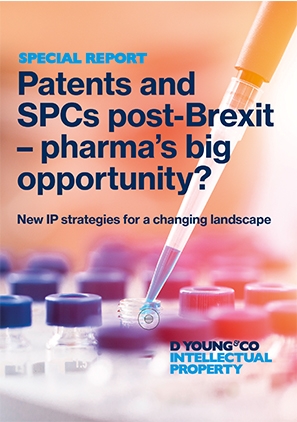Goodbye Neurim: CJEU decides only the first authorisation will do for an SPC
In an eagerly awaited decision (Santen, C-673/18), the Court of Justice of the European Union (CJEU) has today ruled that marketing authorisation (MA) for a new therapeutic application of a medicine previously authorised for another application may not be used as the basis for a supplementary protection certificate (SPC) for that medicine. While this decision may disappoint some in the pharmaceutical industry, for others it may provide much-needed clarity on a point of law which has been uncertain for almost a decade.
SPCs extend the term of patents for medicinal and plant protection products in Europe which have been granted an MA. However, Article 3(d) of the EU medicines SPC Regulation (469/2009) requires as a condition of SPC protection that the MA is the first MA for that product as a medicine.
The wording of Article 3(d) would appear to forbid any SPC for a medicinal product based on a new MA for a product previously authorised for another therapeutic use, and early CJEU SPC case law appeared to confirm this. However, in its decision in Neurim (C-130/11), the CJEU, to the surprise of many in the industry, allowed an SPC based on a second medical use patent and an MA which fell within the scope of that patent, despite the existence of an earlier MA for a veterinary use of the same product.
Related article
Sheep don't follow authorisation: CJEU decides on Neurim SPC application, Garreth Duncan, July 2012.
Read moreSince then, debate has raged amongst SPC practitioners over whether the decision in Neurim should be limited to its facts, or applied more widely to allow SPCs for re-formulations of previously authorised products, or even dismissed as a “rogue” decision and disregarded entirely.
The Neurim decision was once again considered in the present case. The applicant Santen filed an SPC for the drug cyclosporin based on a second medical use patent and an MA for its use to treat keratitis. This SPC was rejected by the Institut National de la Propriété Industrielle (INPI - the French patent office) on the grounds of non-compliance with Article 3(d), as a prior MA had been granted for the same drug. Santen appealed the decision, citing Neurim. The French court referred the matter to the CJEU, asking the following questions:
"Must the concept of a ‘different application’ within the meaning of [the Neurim decision] be interpreted strictly, that is to say:
- as limited only to the situation where an application for human use follows a veterinary application;
- or as relating to an indication within a new therapeutic scope, in the sense of a new proprietary medical product, compared with the earlier marketing authorisation, or a medicinal product in which the active ingredient acts differently from how it acts in the medicinal product to which the first marketing authorisation related;
- or more generally, in the light of the objectives of [the SPC Regulation] of establishing a balanced system taking into account all the interests at stake, including those of public health, must the concept of a “new therapeutic use” be assessed according to stricter criteria than those for assessing the patentability of the invention;
or must it on the other hand be interpreted broadly, that is to say, as including not only different therapeutic indications and diseases, but also different formulations, posologies and/or means of administration?
Does the expression “[application] within the limits of the protection conferred by the basic patent” within the meaning of [the Neurim decision], mean that the scope of the basic patent must be the same as that of the marketing authorisation relied upon and, therefore, be limited to the new medical use corresponding to the therapeutic indication of that marketing authorisation?"
In order to decide on the above points of law, the CJEU first considered what is meant by the term “product” in Article 1(b) of the SPC Regulation. The Article defines it as “the active ingredient or combination of active ingredients of a medicinal product”. In accordance with its case law prior to Neurim, the CJEU noted that the scope of this definition is not limited by or dependent on the intended use of the product, and therefore the fact that the product is being used for a new therapeutic application does not make it a new “product” under Article 1(b).
The CJEU also noted that Article 3(d) does not refer to the scope of protection of the basic patent: if it were to be taken into consideration for determining what is the “first MA” under Article 3(d), this would also call into question the clear definition of “product” in Article 1(b). The CJEU therefore departed from the Neurim decision and held that the scope of the basic patent irrelevant in determining whether Article 3(d) was met. The court considered doing so would not only undermine the objectives of the SPC Regulation, but also compromise the simplicity of the SPC system and lead to divergent decisions from national patent offices.
The CJEU therefore answered the question that an MA for a new therapeutic application of a product cannot be regarded as the first MA for that product for the purposes of Article 3(d) if the product has already received an MA for a different therapeutic application.
The court’s decision would appear to make a clean break from Neurim, and may bring an end to the possibility of obtaining SPCs based on new therapeutic uses of previously approved products. Its clarity will be appreciated by many, given the uncertainties the Neurim decision caused for some years – but the prohibition on SPCs will be a blow to research into new medical uses. A more detailed article soon setting out the full implications of the decision will follow soon.

